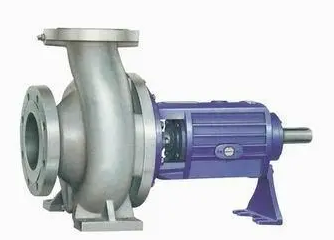Selection of centrifugal pump inlet diameter
The selection of the inlet diameter of a centrifugal pump is a comprehensive consideration process involving multiple factors, mainly including the pump flow rate, inlet speed, application occasion, pipeline characteristics, and pump performance characteristics. The following are some specific selection principles and steps:
I. Selection principles
1. Flow rate and inlet speed:
The inlet diameter of a centrifugal pump should be determined based on the pump flow rate Q and inlet speed v. Usually, these parameters can be found in the pump parameter table.
According to Section 3 of the international standard ISO9906-1999, the formula D=πv4KQ
(where D is the inlet diameter and K is the empirical coefficient, generally 0.6~0.8) can be used to calculate the appropriate inlet diameter.
2. Application occasions:
Different types of centrifugal pumps and application occasions have different requirements for the inlet diameter. For example, seawater centrifugal pumps, sewage centrifugal pumps, fire centrifugal pumps, and centrifugal air-conditioning pumps have different standard size ranges for inlet diameters.
In situations where a large flow rate is required, a larger inlet diameter should be selected; in situations where energy saving is required or space is limited, a smaller inlet diameter may be required.

3. Pipeline characteristics:
Factors such as the length, angle and elbows of the pipeline will also affect the selection of the inlet diameter. Generally speaking, the more elbows there are in the pipeline, the larger the pipe diameter may need to be to reduce fluid resistance and pressure loss.
At the same time, the resistance loss of the inlet pipeline also needs to be considered, especially when there are factors such as bends, throttling and valves in the pipeline.
4. Performance characteristics of the pump:
The inlet diameter has a great influence on the performance of the pump. Too small an inlet diameter will cause the pump's inlet pressure to be too high, affecting the performance and service life of the pump; while too large an inlet diameter may increase costs and unnecessary space occupation.
Therefore, when selecting the inlet diameter, it is necessary to ensure that the performance and efficiency of the pump can meet the use requirements.
II. Selection steps
1. Determine the flow and pressure requirements:
First, clarify the flow and pressure head (or head) of the required pump, which is the basis for selecting the pump model and inlet diameter.
2. Select the pump model:
Based on the flow and pressure requirements, select the appropriate pump model in the pump performance curve. Pay attention to the pump parameter table to understand the inlet diameter range of the pump model.
3. Calculate the inlet diameter:
Use the above formula or the data in the pump parameter table to calculate or determine the appropriate inlet diameter.
4. Consider the pipeline characteristics and application occasions:
According to the actual needs of the pipeline characteristics and application occasions, make appropriate adjustments to the calculated inlet diameter.
5. Select the standard pipe diameter:
Select the standard pipe diameter closest to the calculated result in the market as the inlet diameter of the centrifugal pump. Pay attention to selecting pipes and fittings with sufficient strength and corrosion resistance.
6. Installation and commissioning:
Install and commission according to the pump installation instructions, ensure that the connection between the inlet pipe and the pump body is tight and leak-free, and check whether the pump's operating performance meets the requirements.




